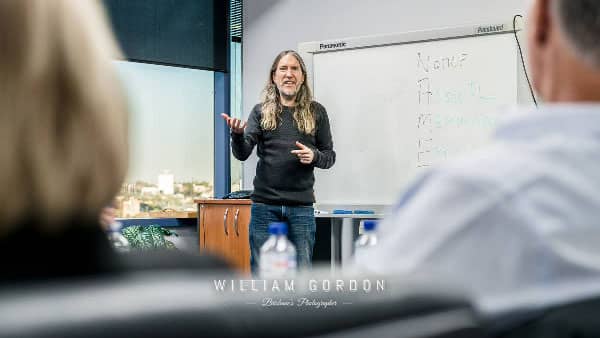התחל במצב לא מקוון עם האפליקציה Player FM !
Story Method: How To Master This Unique Mnemonic Strategy Fast
Manage episode 440207659 series 3235856
 The story method is a cool mnemonic technique that helps you rapidly remember just about anything.
The story method is a cool mnemonic technique that helps you rapidly remember just about anything.
And here’s the very good news:
Because I know a lot about this specific approach to mnemonic linking, the specifics of the story method for learning faster are detailed for you on this page.
I’ve used it successfully for target learning projects like getting my PhD and learning languages. And you can too.
But please don’t get worried by the use of the word “story” for this method.
It’s not really about creativity or spending hours coming up with a detailed narrative.
By the same token, if you’d like to become more creative and connect in a deeper way with your imagination, this method is the ticket.
You just need to understand what the technique is and how to get it working effectively.
That way, you’ll be able to use it efficiently.
Ready to dive in?
Let’s go!
What Is The Story Method?
For many people, a story is easier to remember than a list of facts. According to one researcher, our brain is literally wired to pay attention to stories, specifically through oxytocin. In his co-authored study, Paul Zak found that people who say public service ads featuring stories, were more likely to respond to the messages in the desired way.
In order for the participants to respond, they have to remember what the messages were about.
When using memory techniques, people have seized upon using stories to either improve memory or have ideas remembered for a very long time.
For example, we know a lot of about memory techniques because stories about Simonides of Ceos that teach the technique are themselves highly memorable. In the most famous story about his legendary memory skills, we learn about how Simonides memorized names at a banquet hall.
However, shortly after the dinner ended, an earthquake destroyed the building, ending the lives of everyone inside. Simonides, had already left, however. When the authorities asked him to help identify the dead, he used the method of loci to name where each person was sitting.
The drama of the story makes it memorable, and helps you learn the core processes involved in the Memory Palace technique.
Benefits Of Using The Story Method
The story method is good for specific learning outcomes, typically lists of names, items, certain kinds of events and simple concepts.
At a more granular level, you can add story elements to other linking methods, such as a PAO System or the pegword method. Usually, I think of adding narrative elements as a kind of mnemonic vignette rather than a full story.
Beyond that, I find the story method quite limited compared to other memory techniques.
But if you need to memorize lists, it’s a solid option because stories can help you forge strong connections quickly. You just need to understand how and why stories work so well as mnemonic devices, which is why we paused on the points above. Now let’s look at how to implement the technique.
How To Use The Story Method
Let’s have a look at how to use this method, followed by some examples and alternative approaches.
There’s no right or wrong, as such. Each person needs to experiment with the options and work out what I call a “mnemonic style.”
The more tools you have in your toolbox, the better.
Step One: Gather Your List & Optimize The Order
This step sounds kind of obvious, but it’s worth looking at some nuances.
For example, if you’ve got the main points gathered from a textbook, is it better to memorize them in the order you found them? Or should you order them in a hierarchy of importance?
I suggest taking a moment to reflect on your options.
The only time I don’t take time to organize information is when I’m memorizing names at an event. Or, in the case of memorizing a poem or speech, the information is already organized.

Step Two: Add Story Elements
Let’s use the example of memorizing names at an event.
A few years ago, I memorized 32 names at a presentation I gave in Brisbane. The first two names were Haley and Allan.
My basic mnemonic images were Halley’s comet and an allen key. The story I added involved Halley’s comet crashing into a giant allen key.
To make the story even stranger, and therefore more memorable, I had Allen Funt hold the allen key.
The next person was named Sharon, so I had Allen use his allen key to adjust Sharon’s next. The story built from there and I was able to recall each and every name with 100% accuracy 15 minutes later during my demonstration.
Now, I mentioned that little or no creativity is involved, but that using the technique can make you more creative. Notice in my example that I didn’t invent Halley’s comet or allen keys. I just drew a relationship between the sounds of the names as they were mentioned to me and made a story out of these elements.
But even the idea that I “made” a story is a bit much. Rather, it’s better to say that I used natural possibilities to quickly forge a connection. Comets falls from the sky, for example. Although we don’t use allen keys to adjust the human neck, it is within the realm of possibility for those ideas to draw a connection.
It can take a bit of practice to get used to letting story elements connect to the target information, but you’ll be able to do it. I even did it live for Guru Viking by memorizing Shakespeare on the spot on his podcast if you’d like to see a realtime example of using the story method.
Step Three: Involve A Memory Palace
The problem with the story method is that it takes work to come up with long and logical narratives for any kind of list with a substantial amount of information in it.
That’s why using a Memory Palace and the mnemonic vignette approach is so powerful. It essentially involves lots of mini-stories laid out along a journey.
Here’s the Memory Palace I used for my TEDx Talk. It’s based on a neighborhood I used to live in called Kelvin Grove:
Each station or locus in this Memory Palace is numbered.
The opening line of the speech is:
How would you like to completely silence your mind?
The story I used involved Howie Mandel using wood to hit the “thumbs up” button on a YouTube video. Here’s the breakdown of how the parts of this story helped me memorize the line:
- Howie = how
- wood = would
- Youtube button = you
- like button = like
Little words like “to” did not take an image. But if I needed one, I would probably involved someone like Desmond Tutu in the story. For the “completely silence your mind” part of the sentence, I didn’t involve a story. That’s because this was the theme of the whole talk and not in need of memorization.
For the rest of the talk, I carried on through the Memory Palace. Each station took as many mini-stories as was needed for me to memorize the entire speech.
As an additional memory aid, I scripted the talk itself to contain a story.
This leads us to an alternative story method options that you may want to consider using: Using a story itself as source for a Memory Palace.
Powerful Story Method Variation:
Use A Story As A Memory Palace
To use this version of the story method, pick a movie or novel and make an inventory of locations you can remember. Ideally, you will not base the Memory Palace on every little last detail — instead, I suggest you work with just a few story locations that come naturally to mind.

For example, in The Matrix, I readily remember these locations:
- The hotel
- Neo’s apartment
- The dance club
- The interrogation room
- The desert of the real
- The bridge of Morpheus’ ship
- Neo’s chamber
- The Oracle’s waiting room
- The Oracle’s kitchen
- The subway
- The hallway with the final showdown between Neo and Agent Smith
While I was writing the list, I remembered even more, such as the street with the woman in the red dress, the dojo, and more. Just going through one movie makes for incredible memory exercise!
To use this version of the story method, mentally arrange these locations to suit your learning project. Using the chronological order as you experience them while watching the movie makes the most sense, but you could also arrange them alphabetically or in whatever way feels right for you.
Next, start to “link” your information inside the story. Now, unlike your home, this kind of Memory Palace comes “pre-loaded” with all kinds of imagery to work with.
For example, let’s say you want to memorize a phrase like meliora sequimur. This is the Latin motto for Brisbane, which means, “We aim for better things.”
You can take the mess hall on Morpheus’ ship and have Mouse complain about the “meal’s aura” “meliora” and have a giant second-hand from a clock ticking over his head. From there, you have many choices, such as using locations from The Hobbit or The Lord of the Rings.

Should You Use The Story Method?
As you can probably already tell, I don’t find that story memory technique is the greatest method for speed, efficiency, or even effectiveness. But it is an interesting alternative to the Memory Palace for language learning and one well worth exploring. It can definitely help you remember all sorts of things.
That said, there’s something you need to be aware of as you start experimenting with using stories as part of your mnemonic strategy for learning.
I haven’t talked to every memory expert under the sun, but so far I don’t know anyone who uses the story method extensively. Here’s the only exception that comes to mind:
Years ago, the memory athlete Idriz Zogaj mentioned something like a virtual story method when speaking about a memory competitor he knows. Unfortunately, Zogaj’s explanation is second hand and therefore a bit vague. But if you listen to this episode of my podcast with Zogaj, you can just for yourself.
You might also like to consider a close parallel to the story method: the use of video games. This approach involves using virtual Memory Palaces. I’ve used Donkey Kong and have heard of people basing their Memory Palaces on games like The Legend of Zelda, Skyrim, and all kinds of fantasy locations to help them learn faster and remember more.
At the end of the day, those are all great Memory Palace exercises. But it’s up to you to learn and practice the techniques so you’re aware of which exact approaches work best for you. I hope exploring the story method and some of the variations I’ve discovered has helped you out with that process.
Need more help? Grab my FREE Memory Improvement Course here:
It will help you master these concepts further so you can get out there and remember just about anything.
Enjoy and please let me know how you find using this technique for your learning goals!
The post Story Method: How To Master This Unique Mnemonic Strategy Fast appeared first on Magnetic Memory Method - How to Memorize With A Memory Palace.
21 פרקים
Story Method: How To Master This Unique Mnemonic Strategy Fast
Magnetic Memory Method – How to Memorize With A Memory Palace
Manage episode 440207659 series 3235856
 The story method is a cool mnemonic technique that helps you rapidly remember just about anything.
The story method is a cool mnemonic technique that helps you rapidly remember just about anything.
And here’s the very good news:
Because I know a lot about this specific approach to mnemonic linking, the specifics of the story method for learning faster are detailed for you on this page.
I’ve used it successfully for target learning projects like getting my PhD and learning languages. And you can too.
But please don’t get worried by the use of the word “story” for this method.
It’s not really about creativity or spending hours coming up with a detailed narrative.
By the same token, if you’d like to become more creative and connect in a deeper way with your imagination, this method is the ticket.
You just need to understand what the technique is and how to get it working effectively.
That way, you’ll be able to use it efficiently.
Ready to dive in?
Let’s go!
What Is The Story Method?
For many people, a story is easier to remember than a list of facts. According to one researcher, our brain is literally wired to pay attention to stories, specifically through oxytocin. In his co-authored study, Paul Zak found that people who say public service ads featuring stories, were more likely to respond to the messages in the desired way.
In order for the participants to respond, they have to remember what the messages were about.
When using memory techniques, people have seized upon using stories to either improve memory or have ideas remembered for a very long time.
For example, we know a lot of about memory techniques because stories about Simonides of Ceos that teach the technique are themselves highly memorable. In the most famous story about his legendary memory skills, we learn about how Simonides memorized names at a banquet hall.
However, shortly after the dinner ended, an earthquake destroyed the building, ending the lives of everyone inside. Simonides, had already left, however. When the authorities asked him to help identify the dead, he used the method of loci to name where each person was sitting.
The drama of the story makes it memorable, and helps you learn the core processes involved in the Memory Palace technique.
Benefits Of Using The Story Method
The story method is good for specific learning outcomes, typically lists of names, items, certain kinds of events and simple concepts.
At a more granular level, you can add story elements to other linking methods, such as a PAO System or the pegword method. Usually, I think of adding narrative elements as a kind of mnemonic vignette rather than a full story.
Beyond that, I find the story method quite limited compared to other memory techniques.
But if you need to memorize lists, it’s a solid option because stories can help you forge strong connections quickly. You just need to understand how and why stories work so well as mnemonic devices, which is why we paused on the points above. Now let’s look at how to implement the technique.
How To Use The Story Method
Let’s have a look at how to use this method, followed by some examples and alternative approaches.
There’s no right or wrong, as such. Each person needs to experiment with the options and work out what I call a “mnemonic style.”
The more tools you have in your toolbox, the better.
Step One: Gather Your List & Optimize The Order
This step sounds kind of obvious, but it’s worth looking at some nuances.
For example, if you’ve got the main points gathered from a textbook, is it better to memorize them in the order you found them? Or should you order them in a hierarchy of importance?
I suggest taking a moment to reflect on your options.
The only time I don’t take time to organize information is when I’m memorizing names at an event. Or, in the case of memorizing a poem or speech, the information is already organized.

Step Two: Add Story Elements
Let’s use the example of memorizing names at an event.
A few years ago, I memorized 32 names at a presentation I gave in Brisbane. The first two names were Haley and Allan.
My basic mnemonic images were Halley’s comet and an allen key. The story I added involved Halley’s comet crashing into a giant allen key.
To make the story even stranger, and therefore more memorable, I had Allen Funt hold the allen key.
The next person was named Sharon, so I had Allen use his allen key to adjust Sharon’s next. The story built from there and I was able to recall each and every name with 100% accuracy 15 minutes later during my demonstration.
Now, I mentioned that little or no creativity is involved, but that using the technique can make you more creative. Notice in my example that I didn’t invent Halley’s comet or allen keys. I just drew a relationship between the sounds of the names as they were mentioned to me and made a story out of these elements.
But even the idea that I “made” a story is a bit much. Rather, it’s better to say that I used natural possibilities to quickly forge a connection. Comets falls from the sky, for example. Although we don’t use allen keys to adjust the human neck, it is within the realm of possibility for those ideas to draw a connection.
It can take a bit of practice to get used to letting story elements connect to the target information, but you’ll be able to do it. I even did it live for Guru Viking by memorizing Shakespeare on the spot on his podcast if you’d like to see a realtime example of using the story method.
Step Three: Involve A Memory Palace
The problem with the story method is that it takes work to come up with long and logical narratives for any kind of list with a substantial amount of information in it.
That’s why using a Memory Palace and the mnemonic vignette approach is so powerful. It essentially involves lots of mini-stories laid out along a journey.
Here’s the Memory Palace I used for my TEDx Talk. It’s based on a neighborhood I used to live in called Kelvin Grove:
Each station or locus in this Memory Palace is numbered.
The opening line of the speech is:
How would you like to completely silence your mind?
The story I used involved Howie Mandel using wood to hit the “thumbs up” button on a YouTube video. Here’s the breakdown of how the parts of this story helped me memorize the line:
- Howie = how
- wood = would
- Youtube button = you
- like button = like
Little words like “to” did not take an image. But if I needed one, I would probably involved someone like Desmond Tutu in the story. For the “completely silence your mind” part of the sentence, I didn’t involve a story. That’s because this was the theme of the whole talk and not in need of memorization.
For the rest of the talk, I carried on through the Memory Palace. Each station took as many mini-stories as was needed for me to memorize the entire speech.
As an additional memory aid, I scripted the talk itself to contain a story.
This leads us to an alternative story method options that you may want to consider using: Using a story itself as source for a Memory Palace.
Powerful Story Method Variation:
Use A Story As A Memory Palace
To use this version of the story method, pick a movie or novel and make an inventory of locations you can remember. Ideally, you will not base the Memory Palace on every little last detail — instead, I suggest you work with just a few story locations that come naturally to mind.

For example, in The Matrix, I readily remember these locations:
- The hotel
- Neo’s apartment
- The dance club
- The interrogation room
- The desert of the real
- The bridge of Morpheus’ ship
- Neo’s chamber
- The Oracle’s waiting room
- The Oracle’s kitchen
- The subway
- The hallway with the final showdown between Neo and Agent Smith
While I was writing the list, I remembered even more, such as the street with the woman in the red dress, the dojo, and more. Just going through one movie makes for incredible memory exercise!
To use this version of the story method, mentally arrange these locations to suit your learning project. Using the chronological order as you experience them while watching the movie makes the most sense, but you could also arrange them alphabetically or in whatever way feels right for you.
Next, start to “link” your information inside the story. Now, unlike your home, this kind of Memory Palace comes “pre-loaded” with all kinds of imagery to work with.
For example, let’s say you want to memorize a phrase like meliora sequimur. This is the Latin motto for Brisbane, which means, “We aim for better things.”
You can take the mess hall on Morpheus’ ship and have Mouse complain about the “meal’s aura” “meliora” and have a giant second-hand from a clock ticking over his head. From there, you have many choices, such as using locations from The Hobbit or The Lord of the Rings.

Should You Use The Story Method?
As you can probably already tell, I don’t find that story memory technique is the greatest method for speed, efficiency, or even effectiveness. But it is an interesting alternative to the Memory Palace for language learning and one well worth exploring. It can definitely help you remember all sorts of things.
That said, there’s something you need to be aware of as you start experimenting with using stories as part of your mnemonic strategy for learning.
I haven’t talked to every memory expert under the sun, but so far I don’t know anyone who uses the story method extensively. Here’s the only exception that comes to mind:
Years ago, the memory athlete Idriz Zogaj mentioned something like a virtual story method when speaking about a memory competitor he knows. Unfortunately, Zogaj’s explanation is second hand and therefore a bit vague. But if you listen to this episode of my podcast with Zogaj, you can just for yourself.
You might also like to consider a close parallel to the story method: the use of video games. This approach involves using virtual Memory Palaces. I’ve used Donkey Kong and have heard of people basing their Memory Palaces on games like The Legend of Zelda, Skyrim, and all kinds of fantasy locations to help them learn faster and remember more.
At the end of the day, those are all great Memory Palace exercises. But it’s up to you to learn and practice the techniques so you’re aware of which exact approaches work best for you. I hope exploring the story method and some of the variations I’ve discovered has helped you out with that process.
Need more help? Grab my FREE Memory Improvement Course here:
It will help you master these concepts further so you can get out there and remember just about anything.
Enjoy and please let me know how you find using this technique for your learning goals!
The post Story Method: How To Master This Unique Mnemonic Strategy Fast appeared first on Magnetic Memory Method - How to Memorize With A Memory Palace.
21 פרקים
כל הפרקים
×ברוכים הבאים אל Player FM!
Player FM סורק את האינטרנט עבור פודקאסטים באיכות גבוהה בשבילכם כדי שתהנו מהם כרגע. זה יישום הפודקאסט הטוב ביותר והוא עובד על אנדרואיד, iPhone ואינטרנט. הירשמו לסנכרון מנויים במכשירים שונים.








